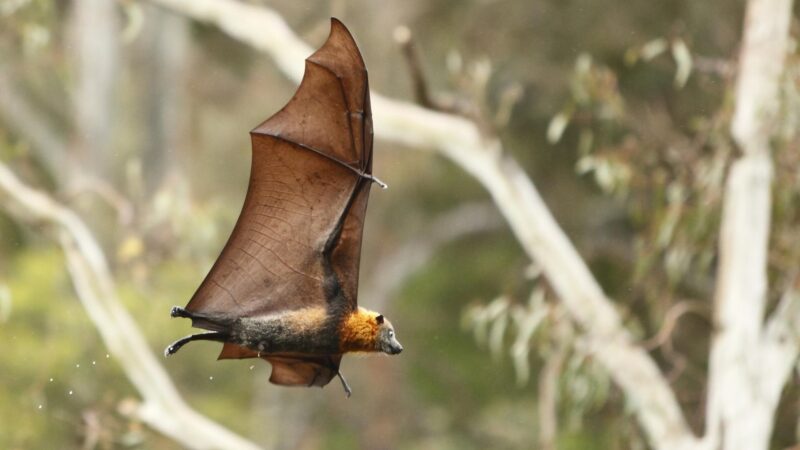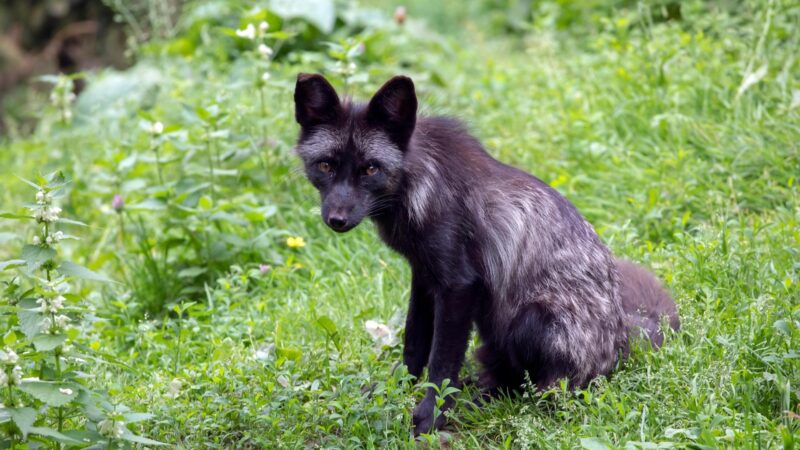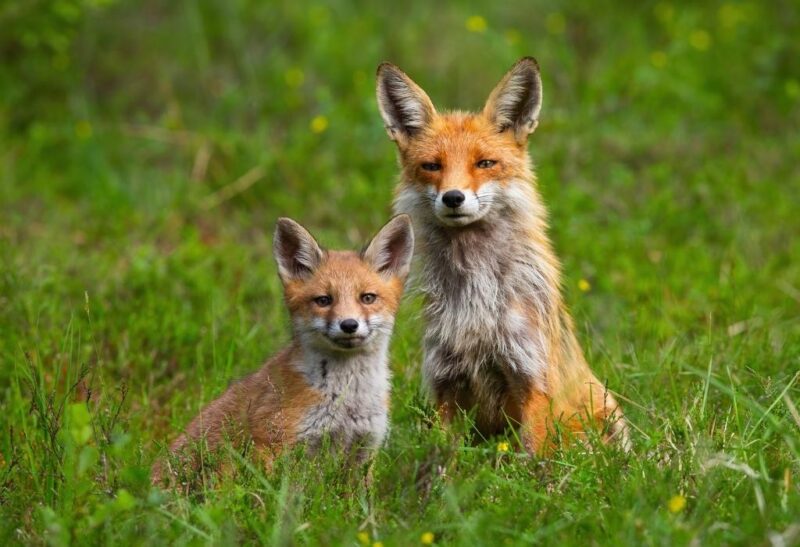Foxes are ferocious predators as they kill a lot of prey which is more than what they can consume. But they also succumb to diseases, starvation, accidents, parasites, and even predation. While these are facts, they continue to be widespread, especially in the Northern hemisphere.
Foxes can live up to 15 years. But due to predation and food shortage, they only survive the wild for 4 to 6 years. Once a fox survives the two years of existence, it’s experienced enough to prolong its life for 2 to 4 years. Foxes can live longer in captivity, around 12 to 15 years.
Unlike wolves, foxes are solitary, so they don’t have a pack to depend on. You may think that it’s the reason why survival in the wild is a big challenge for them, however, they have other struggles that this article will cover.
Table of Contents
How Long Do Foxes Live as Pets?
Foxes can live up to 14 years as pets. They have longer lifespans compared to when they’re in the wild. When living as pets in a household, they’re protected and well taken care of by humans.
How Long Do Foxes Live In Captivity?
Since foxes won’t be exposed to imminent danger and harmful factors when they’re being kept as pets, they can live longer up to 12 to 15 years.
Where Do Arctic Foxes Live?

Arctic foxes primarily live in the Arctic and Alpine tundra, specifically in Coastal regions. Hence, they’re likely found in treeless tundra and Arctic regions of Greenland, North America, Iceland, and Eurasia.
How Long Do Arctic Foxes Live?
When Arctic foxes are in their natural habitat, they can live up to around 5 to 7 years. The young of these foxes usually don’t survive over 6 months of their lives.
Moreover, the tougher siblings may eat the weaker ones when the food is scarce. The lifespan of Arctic foxes is higher when they’re in captivity, as they get to live up to 16 years.
Where Do Red Foxes Live?

Apart from having the most population among other fox species, red foxes occupy a wide range of habitats such as mountains, farmlands, prairie, tundra, desert, forests, and even urban areas. They like dwelling in places with mixed vegetation. Examples of ideal habitats for them are woodland and mixed scrub.
How Long Do Red Foxes Live?
The average lifespan of red foxes in the wild is 3 years. Despite this fact, their population is stable. They can live longer when in captivity for 10 to 12 years.
Where Do Fennec Foxes Live?

Fennec foxes exclusively live in the desert and arid, sandy regions. Although they’re in the desert, they still need light scrub vegetation and desert grasses, which are for bolstering and lining their dens.
With dry surroundings, they can survive without water in a Saharan climate. Of course, they may need water which they can get from the vegetation around them.
How Long Do Fennec Foxes Live?
These desert foxes have a relatively higher lifespan as they can live up to 10 years in the wild. In captivity, they’ll live for 2 more years.
Where Do Flying Foxes Live?

Flying foxes mainly live in disturbed and lowland forests or some forested areas of small and medium-sized islands. In addition, they can also occupy broadleaf forests, orchards, and coconut groves. In the Conflict Islands, they won’t likely be in areas 100 meters above sea level.
However, flying foxes in the Philippines are in elevation from sea level and even over 900 meters. It doesn’t mean that they are in submontane rainforests and montane upland forests.
How Long Do Flying Foxes Live?
Little is known about the lifespan of flying foxes, but it appears that they can live up to 9 years in the wild. They may live longer up to 20 years, when captive.
Where Do Gray Foxes Live?

Gray foxes tend to live in brushy, rocky woodlands, as well as deciduous forests. Some of them are in forest-farmland edges and mixed forests. They’re not as widespread as red foxes, but there are many of them in the periphery, lower elevation, and lowlands of Adirondack Park in New York.
These foxes build dens with beddings made of dried leaves, grass, shredded bark, or prey’s fur and feathers. They sometimes rest in an open area near their dens or abandoned barrow of other animals.
How Long Do Gray Foxes Live?
Gray foxes rarely live up to 6 years in the wild, but they can thrive for 14 to 15 years in captivity.
Where Do Black Foxes Live?

Black foxes are the melanistic form of the red fox. Just like red foxes, they have diverse habitats, such as agricultural landscapes and a mix of fields and forests. They adapt to different habitats as humans introduced places to these animals for hunting purposes.
They’re not only found in the Northern hemisphere but also in Australia. Many of them are in Siberia and the Caucasus mountainous area of Russia.
How Long Do Black Foxes Live?
Black foxes live for around 3 years in the wild while they survive longer in captivity for 10 to 12 years.
Do Foxes Live In Holes?
Foxes live in holes that are also called ‘fox earths.’ They intensively use these holes during the breeding season, which generally occurs in spring. These creatures are not fond of staying in dens if not for the said purpose. They prefer to lie on the open ground most of the time.
Some foxes start digging holes in winter in preparation for the incoming spring or breeding season. The remains of dead foxes may be included in the debris that was found underground.
These fox earths are on the taller side than being broad. The diameter is usually around 20 cm. The cubs stay in these holes from April to June. A supply of fresh food is placed inside the den during this period.
Do Foxes Live In the Desert?
Fennec foxes live in the desert. This species can adapt to a dry, arid environment and Saharan climate. Fennec foxes live in groups in the intensive tunnel system situated under the rocks and desert plants. Several entrances are made to confuse their predators.
The tunnel and burrow protect fennec foxes from harsh weather, and they share the same habitat with some birds, rodents, lizards, bugs, and beetles. They know about comfort, so they lay down soft feathers and fur in the interior of their burrows.
These foxes are nocturnal, so they hunt prey at night to avoid the warm climate of the desert. Their body parts are also meant to survive a dry place. For instance, they have feet that have thick fur, so they won’t feel the burning sensation of the sunlight.
The fur on their feet also helps them to take quiet steps when going after prey like small birds, rodents, lizards, beetles, and other insects. They also eat succulent plants and berries. Fennec foxes have thick body fur, as well as the needed insulation at night.
The fur is a pale yellow to cool them down during the day. It also works as a camouflage so they can blend with the sand’s color and hide from their predators. Fennec foxes have noticeably large ears, which help dissipate heat. These ears are very sensitive, so they can detect the smallest insect walking on the sand.
These foxes only drink water whenever available. It’s amazing how they can survive without drinking for a long time. They can gain the necessary water from the food that they eat.
Do Foxes Live In Packs?
The majority of fox species don’t live in packs as they’re known to be solitary animals. While there can be 3 or 4 that live together, they’re the parents and the young. But foxes that live in the desert and semi-desert do live in packs.
They are the Fennec fox that thrives in the Saharan desert and the Corsac fox that are in semi-desert and steppes. These foxes share the same burrow.
Do Young Foxes Live in the Wild?
Young foxes in the wild live in a den or burrow. They are taken care of by their parents and sometimes together with older siblings. During the nursing period that goes for 56 to 70 days, they are also given solid food.
The breeding season of foxes varies based on their locations, but cubs usually leave their parents in autumn. They will disperse and find their territories. It happens in the same home range, and they can go as near as 10 km and as far as 400 km away.
How Long Do Foxes Live in the Wild?
While the average lifespan of foxes in the wild is from 2 to 4 years, some of them get to live up to 9 years.
The Ecology of the Fox
Foxes have diverse habitats. They can survive in different places as long as there’s an abundant food supply. Their home range varies as it depends on the type of habitat and resources. But it’s typically 2 to 8 square miles wide.
Male foxes become territorial when there’s a low supply of food, which usually happens in winter. So, they would mark territory boundaries with their urine and feces.
Related: Where Do Foxes Live? | Habitat and Facts!
Several species of foxes have different preferences in their habitat. Still, they face the same challenges and struggle when living in the wild. All of them have shorter lives in the wild compared to the longer lifespan that they can achieve when captive. It doesn’t mean that they don’t learn how to survive outdoors because predators are also after them, and food shortages can happen.
List of Sources
Crosby, C., Kerwin, K., Maslo, B. (2020). Red Fox Ecology and Behavior. New Jersey Agricultural Experiment Station.
Novak, B. (2007). Vulpes Zerda – Fennec Fox. University of Wisconsin System.
Vulpes vulpes. (2015). The Pennsylvania State University.
Ouillette, R. (2006). Pteropus hypomelanus. Animal Diversity Web.
Saunders, D. A. (1988). Gray Fox. State University of New York, College of Environmental Science and Forestry.
